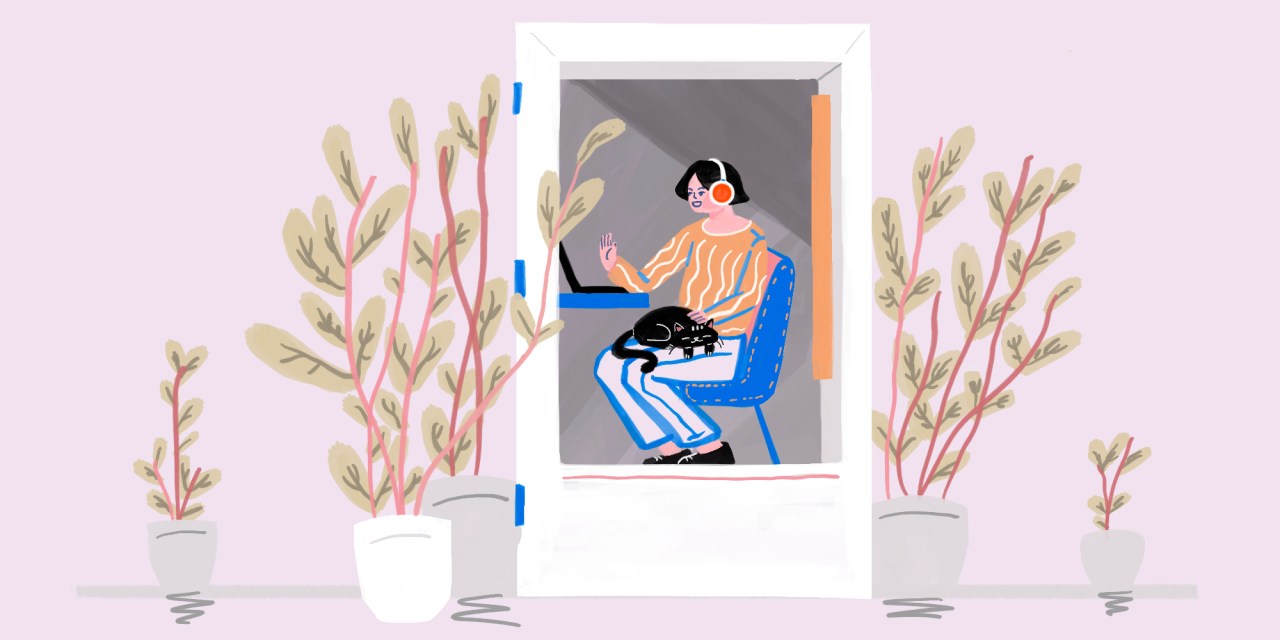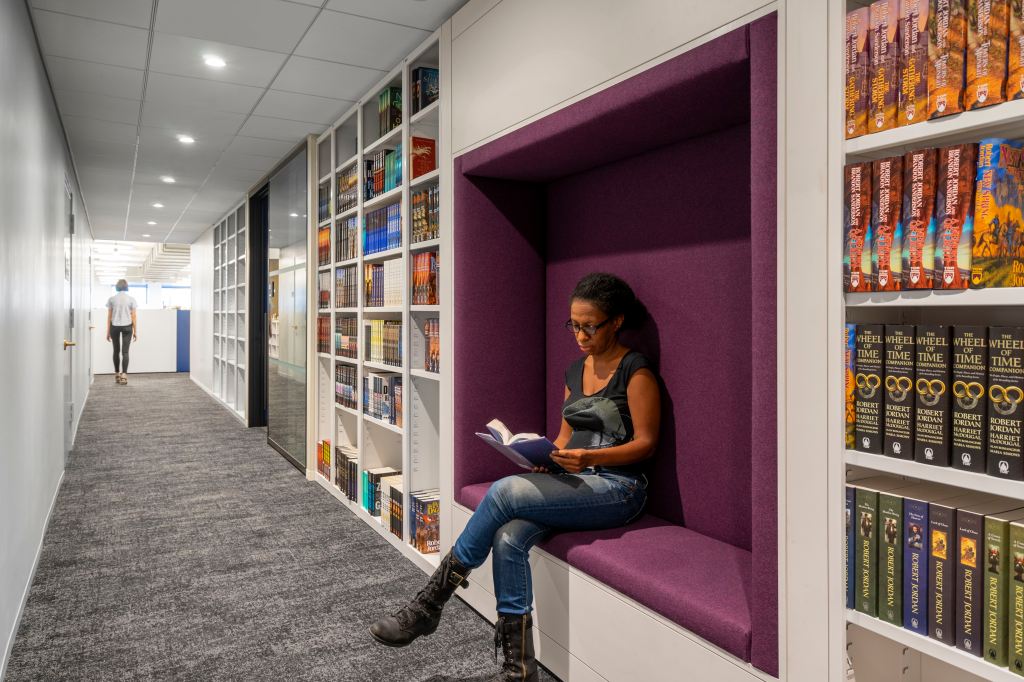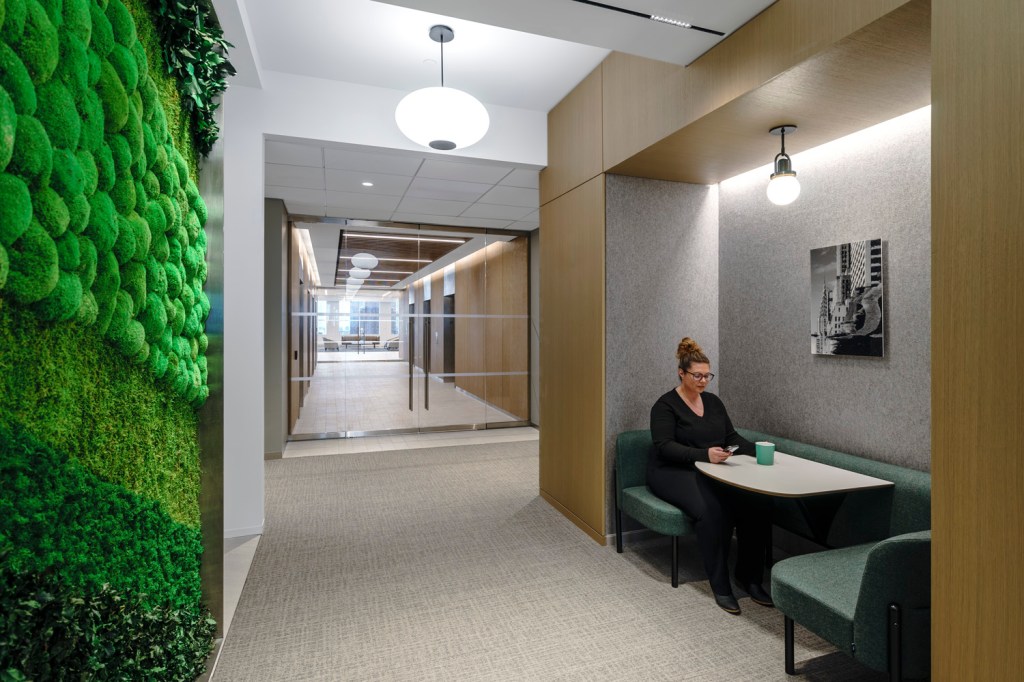How ‘alonement’ at work is creating spaces for the modern smoke break

Workers are back in offices and missing many luxuries afforded to them while working from home — such as a chance to be alone. Bustling open offices built for collaboration are a lot to come back to, and workers are looking for places to get some peace and quiet alone and away from their desks.
“When you get to work on your own terms for 18 months, it’s really hard to readjust to the chaotic environment of the workplace,” said Ricardo Nabholz, managing associate and studio creative director at TPG Architecture.
They’re looking for “alonement,” he said, or solitude-friendly spaces to decompress without leaving one’s workplace. “It is the smoke break for the era of people who don’t smoke,” Nabholz said. Demand for such spaces is reshaping workplace design as employers pay greater attention to workplace wellbeing, and what amenities staff need to feel mentally healthy to do their best work, he said.
Nabholz recently worked on a project with a major tech company which he couldn’t name due to confidentiality agreements to build a greenhouse-like alonement section in the middle of its office space. It’s about the size of a 12-person conference room though meant for one person to use at a time. The space is filled with live plants which also cover the walls for additional privacy, and has one chair. “It’s a place where you can just go in and close the door and have a moment of solitude and to recenter yourself,” Nabholz said.
Because the spaces are designed exclusively as a place to get away, staff abusing the spaces or spending too much time in there isn’t a key concern. “There’s no horizontal space there to put a laptop, other than on top of the water feature,” Nabholz said.

For another recent project, Nabholz helped design a “quiet car” in an office, resembling a quiet car on a train. It’s about the size of a train car and hidden through a bookcase. Staff push a button to enter the space where a small sofa and limited seating accommodate just one or a few people.
Companies are also using furniture design to help create alone-time spaces or at least some perceived solidarity. Semi-enclosed chairs with hoods or hidden booths are one example. “But we’re seeing a lot more clients ask for spaces where they have a door they can close. Ideally, the space is not glass,” he said.
Spaces for alonement are different from those meant for focus or concentration, like phone booths or libraries, which workers are also demanding more of in hybrid arrangements. But libraries can also serve as a space to “be alone together,” similar to a subway or other shared area with respected social norms to keep quiet and to one’s self, Nabholz said.
Employers creating alonement spaces are also increasingly trying to cater to their neurodiverse workforce. Neurodiveristy in the workplace is gaining wider recognition following the pandemic and as more adults seek diagnoses driven by greater awareness on social media platforms like TikTok.
“It was hard for some to come back into this office environment that has even more stimuli and is even more chaotic than the ones left before the pandemic,” Nabholz said.
At integrated comms agency Rooster, staff use MuteBox meeting pods, which are soundproof phone booths, when they need a spot to get away, said James Brooke, managing director.
“Agency life can get pretty hectic and having dedicated spaces to escape the rush is essential,” Brooke said. “For our neurodiverse employees in particular, having meeting booths with noise cancelling capabilities is invaluable for them to get in the zone or block out any distracting sounds,” he said.
But for many workers, having an on-site space to get away is still a wish-list item. Take, for example, Chris Oatway, marketing coordinator at MattressTek, a mattress manufacturing company. He often goes out to his car to get a chance to relax alone, and says his coworkers do as well. He also tends to be the one who goes out to do small drop offs and deliveries to and from suppliers and very much enjoys getting in the work van and away from his desk for a bit, he said.
“I know at least two of the guys here just have their lunch and breaks in their cars, and one has been known to hide in the toilets,” Oatway said.


